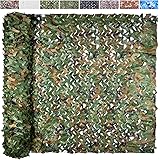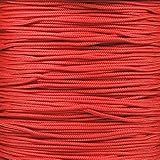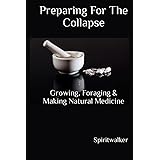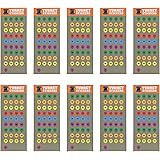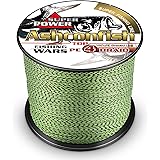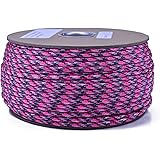Navigating the unpredictable demands of both urban landscapes and remote wilderness environments requires a meticulously planned and highly adaptable Everyday Carry (EDC) survival kit. The challenge often lies in compiling a comprehensive array of tools and supplies without succumbing to excessive bulk or conspicuousness. Many individuals grapple with the logistical hurdles of integrating essential survival items into their daily lives, fearing that preparedness might compromise comfort or discretion.
Fortunately, an optimized approach exists, transforming a disparate collection of gear into a cohesive, multi-layered system that remains accessible and unobtrusive. The principles underpinning such a system emphasize modularity, strategic placement, and redundancy, ensuring that critical capabilities are always at hand, regardless of the immediate situation or attire. As the accompanying video vividly illustrates, the solution involves intelligently distributed components, from pocket-sized pouches to specialized wearable gear, fundamentally enhancing an individual’s readiness posture.
The Foundational Pillars of an Optimized EDC Survival Kit
An effective Everyday Carry survival kit is not merely a collection of items but rather a carefully orchestrated system designed to provide layered security and utility. The core philosophy revolves around carrying essential tools in a manner that maximizes accessibility while minimizing obtrusiveness, suitable for transitioning seamlessly from city concrete to remote trails. This approach ensures that critical capabilities are not dependent on a single bag or location but are instead distributed across various accessible points on one’s person.
Adopting a tiered approach is paramount, often beginning with items that are always on the body, expanding to gear within arm’s reach (e.g., a vehicle kit), and culminating in more extensive resources (e.g., a go-bag at home). The video highlights the initial tier, focusing on personal carry methods that prioritize discretion and immediate utility. Such integration requires careful consideration of each item’s purpose, its weight, and its form factor, ensuring that the entire system remains manageable and functional.
Strategic Distribution: Beyond the Standard Pocket Carry
One of the most significant challenges in building a comprehensive EDC survival kit is effective organization and distribution of components. Traditional pocket carry often leads to clutter and reduced accessibility, especially for more specialized tools. The optimized strategy, as demonstrated, involves leveraging various discreet carry options, moving beyond merely stuffing items into standard pockets.
For instance, specialized pouches can consolidate multiple smaller items, preventing them from becoming lost or tangled within a larger pocket. This not only streamlines access but also protects sensitive gear from wear and tear. Furthermore, integrating gear into clothing accessories like cargo pants, as mentioned in the video, or even purpose-built belts and caps, offers expanded capacity without drawing undue attention, allowing for a broader spectrum of preparedness tools to be carried daily.
Leveraging Purpose-Built Gear for Enhanced Readiness
The market for Everyday Carry and survival gear has evolved significantly, offering innovative solutions that integrate functionality directly into personal accessories. Products like the Wazoo cash belt and cash cap exemplify this integration, transforming everyday items into discreet storage solutions for small but crucial survival tools. The video specifically references the 23-piece adventure kit from Wazoo, which is meticulously designed to fit within such systems, providing a comprehensive set of capabilities in a compact form factor.
These specialized items are not merely novelties; they represent a tactical advantage, enabling individuals to carry fire-starting tools, fishing line, signaling devices, and other micro-survival aids in ways that are virtually undetectable. Such integration allows for a higher level of preparedness without compromising personal style or requiring an overt display of survival-oriented equipment, a critical consideration for urban environments.
Essential Components of a Robust EDC Survival Kit
While the specific items within an Everyday Carry survival kit can vary based on individual needs and anticipated threats, certain categories of tools form the backbone of any effective setup. These categories address fundamental survival needs: shelter, fire, water, navigation, first aid, and signaling. Integrating these elements requires both versatility and redundancy, ensuring that if one tool fails, a backup is readily available.
Understanding the core function of each item and selecting gear that can perform multiple roles effectively is crucial. For example, a quality fixed-blade knife serves not only as a cutting tool but also as a prying implement, a fire steel striker, or even a self-defense tool in an emergency. The strategic selection of these components ensures that the kit provides maximum utility across a broad spectrum of potential survival scenarios.
The Unwavering Importance of a Reliable Cutting Tool
As emphasized in the video with the mention of the SE PR4, a robust and reliable belt knife is an indispensable component of any serious Everyday Carry survival kit. Fixed-blade knives offer superior strength and durability compared to folding knives, making them ideal for heavier tasks like batoning wood, preparing kindling, or constructing makeshift shelters. The choice of blade steel, grind, and handle ergonomics significantly impacts its performance and longevity in challenging conditions.
Beyond its primary function of cutting, a good belt knife can be a multi-faceted survival tool. Its spine can be used to strike a ferro rod, igniting tinder for fire. The point can assist in drilling or puncturing. For those operating in environments where a fixed blade might be less practical, a heavy-duty folding knife with a robust locking mechanism can serve as an alternative, though typically with some limitations in extreme use cases.
Water Procurement and Purification Solutions
Access to potable water is non-negotiable for short-term survival. An optimized EDC survival kit must therefore include methods for both collecting and purifying water. A simple waterproof stuff sack, like the one mentioned in the video, can serve multiple purposes, including water collection from rain or dew, carrying for transport, or even improvised signaling.
Beyond collection, purification is critical. Compact water filters, such as straw-style filters, chemical purification tablets, or even a small amount of iodine, can render questionable water sources safe for consumption. Understanding the principles of boiling water for purification, and having the means to do so (fire starter, metal container), adds another layer of redundancy to your water strategy, vital for extended wilderness scenarios.
Fire Starting and Signaling Redundancy
The ability to reliably start a fire provides warmth, cooks food, purifies water, and offers a significant psychological boost in a survival situation. An optimized EDC kit should incorporate multiple, redundant fire-starting methods to account for varying conditions and potential failures. A robust ferro rod and striker, a waterproof lighter, and stormproof matches each offer distinct advantages.
Coupled with fire, signaling is paramount for rescue. A high-decibel whistle can carry much further than the human voice, conserving energy while attracting attention. A small signal mirror can reflect sunlight over vast distances, indicating your presence to aircraft or distant search parties. These seemingly minor components can make the difference between a prolonged ordeal and a timely rescue, underscoring the importance of thoughtful inclusion in an Everyday Carry survival kit.
Advanced Carry Techniques and Personalization
The true mastery of an optimized Everyday Carry survival kit lies in its personalization and the seamless integration of components into daily life. This goes beyond simply acquiring gear; it involves understanding how each item fits into your routine, how quickly it can be accessed, and how it performs under duress. This personalization extends to the selection of organizational tools, such as the custom dump pouch design by Hat Creek Outdoors, mentioned in the video, which reflects a tailored approach to utility and accessibility.
A dump pouch serves as an incredibly versatile accessory, capable of holding foraged items, temporary storage of tools during tasks, or even acting as a rudimentary water carrier. Its design and placement on the belt or pack are critical for maximizing its utility. Similarly, items carried around the neck or wrist, such as mini multi-tools, compasses, or cordage, provide immediate access to critical functions without requiring pocket rummaging.
Integrating Everyday Items with Survival Gear
A sophisticated Everyday Carry strategy also recognizes the potential survival utility of common items already carried. For example, a robust pen can be a defensive tool or a means to write notes. A quality flashlight, typically carried for convenience, becomes a crucial signaling device or navigational aid in the dark. Even a simple bandana can be used for first aid, water pre-filtration, or signaling.
The concept is not to replace everyday items but to augment them, ensuring that they contribute to overall preparedness. By carefully selecting your daily-use items with a survival mindset, you can significantly enhance your capabilities without adding redundant weight or bulk. This holistic approach ensures that your default carry, even the “normal stuff that most people carry,” contributes meaningfully to your readiness for unexpected emergencies, solidifying the principles behind a truly robust Everyday Carry survival kit.




